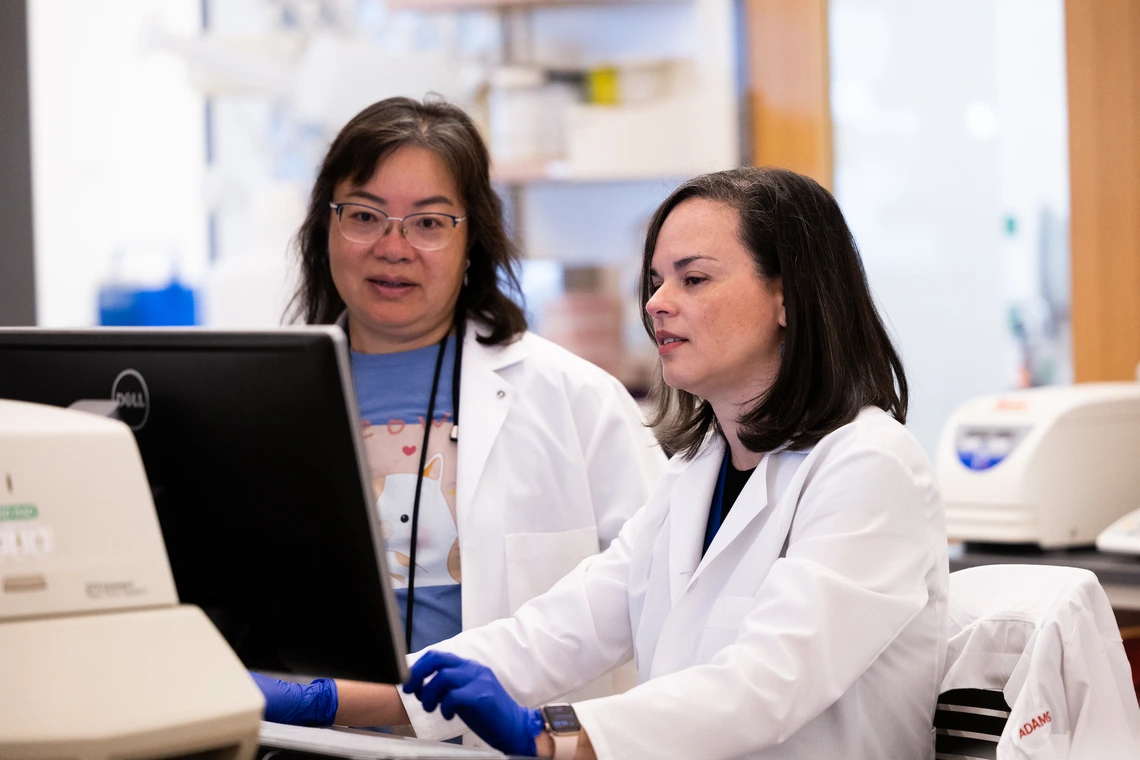NIH awards $2.8M to study environmental, chemical effects on women's fertility

Zelieann Craig, an associate professor in the School of Animal and Comparative Biomedical Sciences, will further investigate the role environmental exposure to phthalates – chemicals commonly found in plastics, personal care products and cosmetics – has on women's health and metabolism.
Ary Frank
Despite growing public awareness of the dangers posed by phthalates, exposure to these harmful chemicals remains widespread. With a new $2.8 million grant from the National Institutes of Health, researchers at the University of Arizona's College of Agriculture, Life and Environmental Sciences are delving deeper into the molecular and cellular effects of phthalates, with the ultimate goal of identifying ways to block or even reverse their harmful impact.
Phthalates are a class of chemical compounds widely used in industrial applications, such as plasticizers to increase durability and flexibility in polymers like PVC – meaning they can be found in common household plastic products like shower curtains and food packaging. Beyond plastics, phthalates are also used as binding agents in everyday products like nail polish, deodorants, fragrances and cleaning solutions.
Despite potential applications and widescale use, the issue with phthalates lies in their weak chemical bonds and how easily they can leach into water, soil and even the air we breathe. Research has shown these chemicals can be endocrine disruptors, which interfere with the body's hormone system and contribute to potential reproductive, neurological, developmental and immune issues.
"When you look at data from the National Health and Nutrition Examination Survey, women consistently show higher levels of specific phthalates than men," said Zelieann Craig, principal investigator on the grant and an associate professor in the School of Animal and Comparative Biomedical Sciences. "It's not just makeup, it's systemic."
Women of reproductive age have been identified as particularly vulnerable to phthalate exposure, a risk attributed to their higher use of phthalate-containing personal care products, certain medications, and increased likelihood of occupational exposure.
"The ongoing hypothesis is that women are exposed to more products that contain phthalates," Craig said. "Perfumes, cosmetics and personal care items are one piece, but medications like those for IBS or Crohn's, which are conditions more prevalent in women, could also be a source."
Craig emphasized that it's important to view phthalate exposure as part of a broader landscape of environmental factors, and that individuals should not avoid necessary medications. "Some exposures we can't avoid, so we make up for that by reducing other sources," she said.
Craig's previous research concentrated on Dibutyl phthalate, a particularly pervasive phthalate that showed higher exposure levels in women. However, this new study shifts focus to phthalate mixtures that more accurately reflect real-world human exposure.
The study aims to not only confirm long-term exposure to phthalates causality in infertility and metabolic disease but explore how phthalates may increase harmful fatty acids in ovarian follicles and disrupt cellular energy metabolism.
"We already know that women with higher phthalate levels are more likely to have a low egg count and lower ovulation rates," Craig said. "Now we're going deeper, identifying which cell types and molecular pathways are affected."
Beyond how phthalate exposure is happening, Craig's long-term goals are focused on how to stop it or even reverse it.
"There are environmental exposures that get into our bodies – phthalates being one of them – and they increase our risk for infertility," she said. "This work is about finding out exactly how that's happening, so we can figure out how to stop it and help people recover their fertility."
In the meantime, while we can't completely eliminate phthalates, we can balance our "environmental chemical budget," according to Craig.
"I always tell people: if you're using products with fragrance, look for ones that say they're free of phthalates," she said. "If the label calls out sulfates and parabens but doesn't mention phthalates – they might still be in there."
She recommends cutting down the number of products you use, find what works for you and stick to those. "Small steps add up," Craig said.


